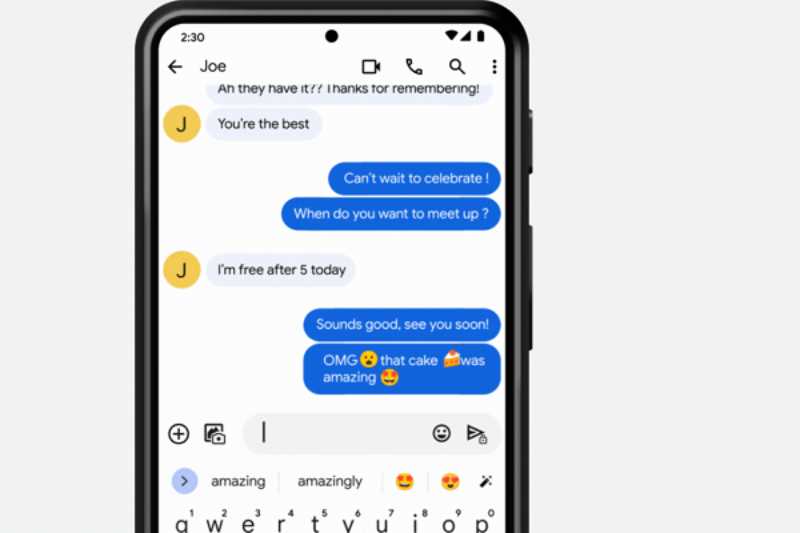While the Mobile World Congress gets underway in Barcelona, Google is releasing a few new features for Android. Upgrades to Android Auto, an AI boost for Messages, and the ability to view tickets and boarding cards directly from your Wear OS wristwatch are among the updates.
This week, Google Messages for Android will provide the AI model Gemini directly from a test version. Without ever leaving the Messages app, you may arrange events, have the model draft messages help you come up with ideas, and get aid with other chores.
An AI update is also coming for Android Auto. To prevent distractions while driving, the interface will automatically utilize artificial intelligence to condense lengthy texts or group discussions. It can also recommend replies, which you can simply tap to send, along with other actions like initiating a call or sharing an estimated time of arrival.
Global rollout of Google’s AI-generated image description feature is also underway. The picture caption tool, which is integrated into the Lookout app, uses artificial intelligence (AI) to provide audio descriptions of photos online or in messaging for those who are blind or visually impaired. When Google first unveiled the function in September, it was limited to English users in the US, UK, and Canada. Lookout image captions are now accessible on Android smartphones worldwide, however they are now limited to English.
Here’s an additional accessibility upgrade for Maps’ Lens feature. As you move your phone about your environment, Lens employs augmented reality and, you guessed it, artificial intelligence to find nearby eateries, train stations, ATMs, and other locations. Google’s TalkBack screen reader can now speak location-specific details aloud, such as company hours, reviews, and directions. Those who are blind or have low vision may find this useful.
Additionally, Google is updating Docs to allow handwritten annotations from an Android tablet or phone. Now, if you would rather edit documents the old-fashioned manner, you may highlight specific portions or take notes in different pen colors using your finger or stylus.
Because you can tap where you want to beam a song when using YouTube Music on an Android device, switching between different devices is made quite easy. With just a button push, you can now effortlessly choose between playing music on your phone, headphones, smart display, or TV thanks to Spotify’s expansion of this feature.
In the mix is a health upgrade as well. With Android’s Health Connect feature, which gathers data from wearables and applications like AllTrails, Oura Ring, and MyFitnessPal, you can now view a summary of your health information in the updated Fitbit app. You may view data from any connected apps alongside your Fitbit data on your Android phone by opening the Fitbit app and selecting the You tab. Information from compatible apps, such as steps taken, calories burnt, and distance traveled, will be displayed on the Today tab.
Lastly, a couple improvements to Wear OS: Now, you can use your smartwatch to access Google Wallet passes, such as boarding passes, tickets, and gym memberships. Thanks to Google Maps integration on Wear OS, you can also receive instructions for public transportation on your wrist. This implies that you can view guided navigation as well as bus, rail, and ferry departure timetables.


